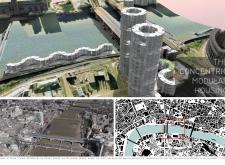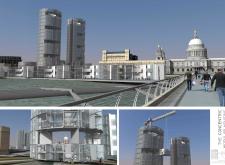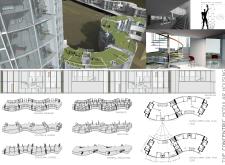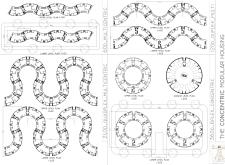5 key facts about this project
The Concentric Modular Housing project is located along the River Thames in London, between Black Friar’s Bridge and Millennium Bridge. It features a concentric modular design that emphasizes efficiency and accessibility. Utilizing the geographical advantages of the area, such as the river and transportation infrastructure, the project aims to facilitate easy transport of prefabricated modules. This approach allows for a quicker construction process and better integration with the urban environment.
Design Concept
The design focuses on modularity, aiming for flexibility in residential living. The building envelope uses composite utilities and access partitions to enhance functionality while ensuring that the spaces remain livable. Special attention has been given to internal circulation, which is planned to support easy movement throughout the housing complex. The aim is to create an environment that encourages community engagement among residents.
Spatial Organization
The project includes dual-level planning, incorporating duplex upper and lower level designs. This variety caters to different family arrangements, highlighting adaptability. Such flexibility allows the housing units to serve a range of living situations, promoting inclusivity and offering residents multiple design options. The thoughtful arrangement seeks to meet the evolving needs of urban living.
Visual Hierarchies
Clear visual hierarchies are employed in the design to help residents navigate the space effectively. This thoughtful spatial organization strikes a balance between personal privacy and community interaction. The layout reflects a contemporary understanding of how people prefer to live and connect with each other. Careful attention to these details enhances the overall living experience.
The Concentric Modular Housing illustrates a commitment to integrating architectural form with its urban context. It emphasizes practical construction methods through the use of prefabrication, providing a sustainable and efficient solution for modern urban life. The project showcases both innovation and responsiveness to contemporary residential needs.






















































